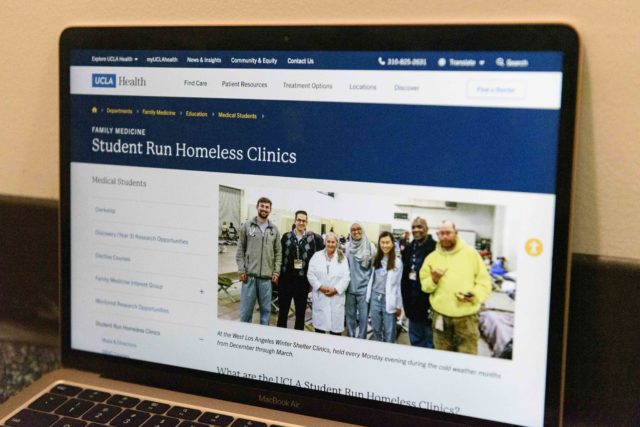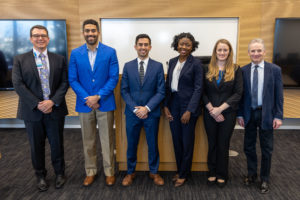The UCLA Department of Family Medicine’s Student Run Homeless Clinics received a neighborhood purpose grant from the North Westwood Neighborhood Council during the council’s November meeting.
The clinic requested $1,000 for preloaded TAP cards and $4,000 for food and water.
[Related: North Westwood Neighborhood Council Recap – Nov. 1]
The Department of Family Medicine started the Student Run Homeless Clinics program in 1990 to provide free medical care to individuals who are homeless and underserved, said Dr. Mary Marfisee, a health sciences assistant clinical professor in the Department of Family Medicine.
The idea for the program was sparked by medical students who noticed people experiencing homelessness with medical needs, she added.
“We actually tried to go to those who are unhoused rather than them come to us,” said Joshua Rivera, an SRHC chief. “That way, we can provide care and make it easier for them to gain access.”
Marfisee, who is also the program director of SRHC, provides medical oversight for each clinic, but the program is managed by student chiefs in medical school, said Spencer Flynn, the SRHC administrative chief.
The SRHC runs over 40 medical student-run clinics, serving around 1,600 patients per year. Medical students often provide services such as physical exams, chronic disease management, wound care, urgent care and immunizations, according to the clinic’s website.
When going to conduct a clinic, students will meet up and gather supplies, and Marfisee is also available with more medical supplies in the SRHC van.
“They’ll go in groups along the different streets around Westwood and just check on people,” Flynn said.
Rivera said some of the care students provide for patients include treating trauma, infections, cardiovascular diseases and mental health. He added that the clinic coordinates additional care with primary care and mental health facilities.
Flynn said having food and water for patients is especially important for establishing relationships and providing them with adequate care, especially during the summer months.
He added that some students in the clinic have also volunteered to cook food for patients.
“We’ve actually had a lot of our students cook the food that we ended up giving to patients – it’s home-cooked, ready-made,” Flynn said. “That’s been special to see people step up and do that.”
Rivera said a vast majority of patients accept and appreciate the clinic’s care. David Kim, an SRHC chief, added that consistency is important for the clinic’s credibility in helping patients but that new patients are often weary of receiving care.
“They’ve been hurt physically, mentally,” Kim said. “It takes some more time to be with their trust.”
Kim said one of the most important aspects of the street medicine clinic is providing underserved patients with care and also giving them the autonomy to choose to receive it.
“(We are) making sure the patient feels heard and that they have a choice to be helped,” he said.
The SRHC also has long-lasting connections with numerous local shelters and organizations, including Pathways and the Union Rescue Mission, Flynn said.
Students can receive course credit for participating in SRHC by signing up for the clinic and are later able to become chiefs in the program, Flynn said.
Flynn said aside from allowing medical students to treat underserved communities with the program, the clinic also provides them with medical knowledge and experience.
“We’re trying to have students learn general medical skills, which I think are very well learned in this setting because you can’t rely on elaborate tests or imaging,” he said. “You’re constrained to really getting to know your patients, doing a very thorough history, including a social history, doing a physical exam, really assessing the patient.”




Comments are closed.